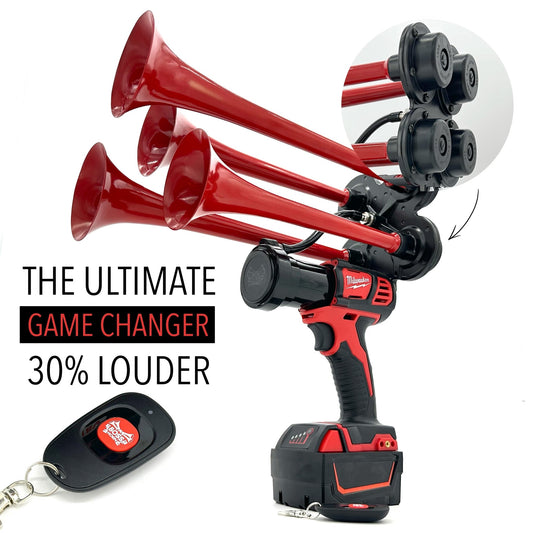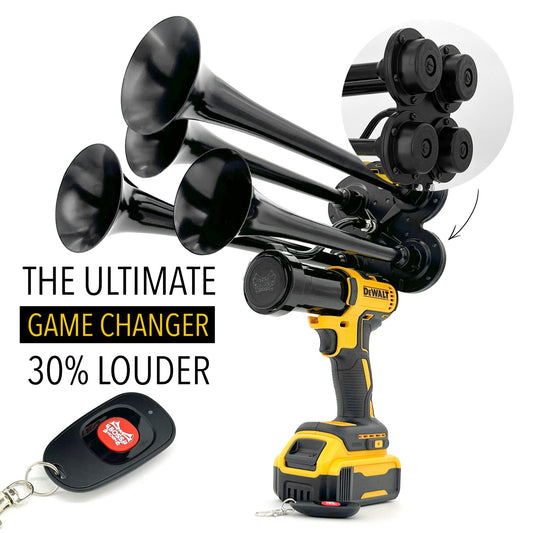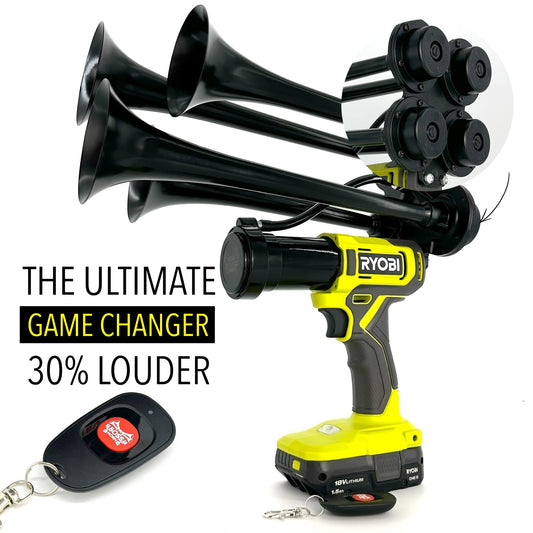Decibels, a unit of measurement for sound intensity, play a vital role in our daily lives, particularly when it comes to car horns. With its piercing and attention-grabbing sound, the car horn has become an indispensable part of our driving experience today. It is a mechanism designed to alert pedestrians and other drivers of an impending danger, providing a means of communication when words fail. Surprisingly, the loudness of a car horn is not only determined by its design and mechanism, but also by the quantum of air pressure produced.
The concept of measuring sound intensity using decibels dates back to the 1920s when engineers sought a standardized system for defining and quantifying sound levels. Over time, the scale has evolved to accommodate the changing needs of modern society. Today, decibels are not only used to measure sound in various contexts, such as music, industrial noise, and environmental monitoring, but also for car horns, where the safety and effectiveness of the sound produced are of utmost importance.
When it comes to car horns, a thought-provoking statistic emerges: according to a recent study, around 31% of accidents occur due to drivers not being aware of their surroundings. This alarming figure highlights the critical role car horns play in preventing accidents and ensuring road safety. It emphasizes the need for an effective sound signal that can effectively grab attention and provide a timely warning in potentially dangerous situations.
To enhance the audibility and effectiveness of car horns, car manufacturers and engineers have continuously sought innovative solutions. One such development is the use of dual-tone horns, which emit a combination of two frequencies to produce a more distinct and attention-grabbing sound. This ingenious solution addresses the challenge of differentiating car horns from other surrounding noises, making them more recognizable and effective in busy urban environments.
In conclusion, the importance of decibels in car horns cannot be underestimated. These units of measurement bridge the gap between silence and cacophony on the roads, ensuring drivers can communicate their presence and potential danger smoothly. As technology advances and our understanding of sound intensifies, the evolution of car horns will likely continue, striving to create safer roads through more efficient and attention-commanding sound signals.
What is the Sound Level of Car Horns? A Comprehensive Exploration of Decibel Levels
Understanding Car Horns and Their Noise Levels
A car horn is an important safety feature that alerts other drivers and pedestrians of a vehicle's presence on the road. It plays a crucial role in preventing accidents and ensuring traffic safety. However, the noise levels produced by car horns can vary greatly, with some being louder and more attention-grabbing than others.
What are Decibels?
Decibels (dB) are the unit of measurement used to quantify the loudness or intensity of sound. It is a logarithmic scale, meaning that a small increase in dB represents a significant increase in sound intensity. For example, a sound at 60 dB is ten times louder than a sound at 50 dB.
Now, let's delve into the various noise levels associated with car horns:
Standard Car Horns
Most conventional car horns emit sound at around 100 to 110 dB. These horns are designed to meet legal requirements and are typically installed by manufacturers as standard equipment in vehicles. While they are effective in most situations, they may not always be sufficient to attract immediate attention in noisy environments or on busy roads.
Air Horns
Air horns, commonly found in larger vehicles such as trucks and commercial vehicles, produce significantly louder sounds. These powerful horns can generate noise levels of up to 150 dB or more. The amplified sound ensures that the horn can be heard over long distances and in high-noise environments. However, the use of air horns is subject to certain regulations and restrictions in some areas to prevent excessive noise pollution.
Aftermarket Upgrades
For individuals who desire an even louder horn, aftermarket options are available. These specialized car horns can produce noise levels ranging from 120 dB to well over 150 dB, depending on the specific product. They are often preferred by enthusiasts, emergency service vehicles, and those who drive in areas with particularly high ambient noise levels.
Statistics on Car Horn Noise Levels
- Standard car horns typically emit sound at around 100 to 110 dB.
- Air horns can generate noise levels of up to 150 dB or more.
- Aftermarket car horns can produce sound levels ranging from 120 dB to over 150 dB.
- Noise levels above 85 dB can cause hearing damage with prolonged exposure.
- Excessive use of car horns in residential areas contributes to noise pollution.
https://youtube.com/watch?v=B5j88x5kd5w
FAQ: Understanding the Sound Intensity of Vehicle Horns
1. What determines the loudness of a vehicle's warning signal?
The loudness of a vehicle's warning signal is governed by various factors, including the sound intensity produced by the horn. These several aspects contribute to the audibility and impact of the horn's sound output.
Key Information:
- The design and construction of the horn itself play a significant role in its sound intensity.
- The power source driving the horn, typically an electric circuit, influences the loudness of the signal.
- The placement and positioning of the horn within the vehicle also affect the direction and effectiveness of the sound projection.
2. How does the shape and construction of a car horn impact its sound intensity?
The shape and structure of a car horn significantly affect its sound intensity by determining how well the sound waves are generated and propagated. Scientific principles related to acoustics guide the design of a horn to ensure maximum efficiency and effective sound output.
Key Information:
- The shape and size of the horn determine the resonance frequency and the wavelengths it can effectively produce, influencing the sound's audibility at different distances.
- The horn's internal configuration, including baffles and chambers, assist in focusing and amplifying the sound waves.
- High-quality materials, such as metals, are often used during the construction of the horn to enhance durability and acoustic properties.
3. Why does the power source of a vehicle horn impact its loudness?
The power source of a vehicle horn, typically an electric circuit powered by the vehicle's battery, has a direct correlation with the loudness of the sound it produces. By providing a controlled amount of electric current, the power source determines the strength of the acoustic output.
Key Information:
- The amount of current flowing through the horn affects the vibration intensity of the horn diaphragm, directly influencing the generated sound waves.
- Different power sources, such as varying battery voltages, can lead to different sound intensities.
- Regular maintenance of the power source, including checking for loose connections or worn-out components, ensures optimal horn performance.
4. How does the placement and positioning of a car horn impact its effectiveness?
The placement and positioning of a car horn within the vehicle play a crucial role in determining how effectively the sound is projected and directed towards its intended target. Thoughtful placement ensures that the warning signal reaches its intended audience clearly and quickly.
Key Information:
- Many vehicles have multiple horn units positioned in different locations to optimize sound projection.
- The location of the horn should comply with relevant safety standards and regulations to ensure audibility without obstructing other vehicle components.
- Proper aiming and alignment of the horn unit enhance its ability to direct the sound waves forward and project effectively.
5. Are there legal restrictions on the loudness of vehicle horns?
Yes, there are legal restrictions in place to regulate the loudness of vehicle horns. The purpose of these restrictions is to strike a balance between providing an effective warning signal and preventing unnecessary noise pollution. These laws vary by jurisdiction, so it is essential to comply with the specific regulations in your area.
Key Information:
- In most countries, vehicle horn loudness is limited to a certain decibel level measured at a specific distance.
- Violating these noise regulations can result in fines or penalties.
- Some jurisdictions may impose additional restrictions based on the time of day or location, such as quieter horns in residential areas or during nighttime hours.
In summary, understanding the factors that contribute to the loudness of a vehicle horn can help drivers choose and maintain an effective warning signal. The design and construction of the horn, the power source driving it, and its proper placement and positioning are all vital considerations. Moreover, adhering to legal restrictions on horn loudness ensures both safety and environmental responsibility.
Conclusion
In conclusion, understanding the decibels of a car horn is crucial for maintaining road safety and communicating effectively on the highways. Car horns typically produce sound levels ranging from 100 to 110 decibels, which can vary depending on the make and model of the vehicle. It is important to note that prolonged exposure to high decibel levels can lead to hearing damage. The legal requirements regarding car horn noise levels may differ across regions, emphasizing the need for drivers to be aware of local regulations. Furthermore, car manufacturers are continuously working towards developing horn systems that are less jarring and more environmentally friendly. Ultimately, by being mindful of the decibels emitted by our car horns and using them responsibly, we can contribute to a safer and more harmonious driving experience for everyone on the road.














